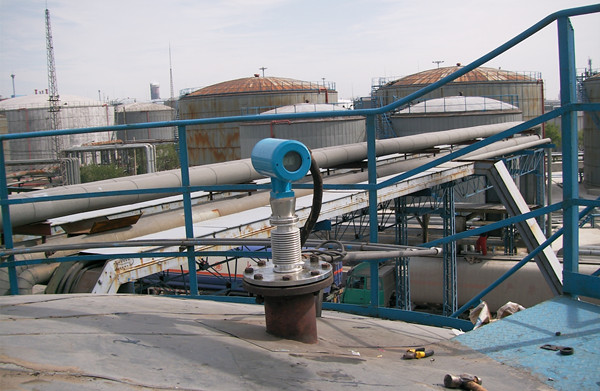When it comes to asphalt, you should not be unfamiliar with the most common is the asphalt used to pave the road. And we are talking about today is the coal chemical industry in the asphalt. Radar level meter measurement of asphalt, there are some difficulties lead to inaccurate measurement, what are the difficulties and what is the solution.
Asphalt is a dark brown complex mixture of hydrocarbons of different molecular weights and their non-metallic derivatives, it is a high viscosity organic liquid, usually in the form of liquid or semi-solid petroleum. It has a black surface and is soluble. Carbon disulfide, carbon tetrachloride, and asphalt are waterproof, moisture-proof, anti-corrosion organic gelling materials.
Asphalt is mainly divided into coal tar pitch, petroleum asphalt, and natural asphalt: where coal tar pitch is a by-product of coking. Petroleum asphalt is the residue of crude oil distillation, natural asphalt is stored underground, some forming mineral layers or piled up on the surface of the earth’s crust. Asphalt is mainly used in the paint, plastic, and rubber industries as well as on road surfaces.
There are two main problems with the radar level meter when measuring asphalt, one is that the asphalt fumes encounter air to cool and condense, blocking the radar level meter, resulting in the radar level meter cannot emit radar waves cannot measure the level.
The other is that in order to prevent the asphalt from solidifying, the temperature of the asphalt tank needs to be higher, resulting in asphalt volatilization to produce asphalt fumes, which are corrosive and the radar level meter is severely corroded, resulting in damage to the radar level meter, which cannot be measured stably for a long time.

The difficulty of the solution is that the flange connection conveys asphalt fumes, causing asphalt fumes corrosion and corrosion of the radar level meter, possible solutions for flange receiver blockage asphalt fumes transmission, but will reduce the radar level meter measurement accuracy. High-temperature evaporation of asphalt produces strong corrosive media, resulting in strongly corrosive media corrosion radar level meter, possible solutions to reduce the asphalt temperature, but affect the asphalt mobility.
Asphalt fumes are not heated or around the insulation device, resulting in asphalt fumes condensed by cold air, blocking the radar level meter, the possible solution is to heat the asphalt fumes with steam or flange pipe with an insulation layer, but the steam of heating fumes will damage the radar level meter. For these difficulties, experts have researched the solution after a series of experiments.

Firstly, Teflon material was added between the radar level meter and the flange pipe, and a material isolation device was used to prevent asphalt fumes from directly contacting the radar level meter.
Second, add an asphalt vibrator to the radar level meter to make the asphalt move downward vibration.
Third, add sprinklers at the flange connection to remove the asphalt fumes cooling the asphalt.
Fourth use the asphalt tank to install asphalt and the gap between the loaded asphalt manually cleans the radar level meter.
Fifth install an exhaust fan at the flange connection to extract the asphalt fumes away to avoid asphalt fumes corrosion blocking the radar level meter.
The sixth radar level meter and the flange pipe between the addition of stainless steel to prevent asphalt fumes contact the radar level meter isolation device.
Through the above methods will be able to solve the radar level meter measurement of asphalt when the problem, through this article, you should also find that any kind of media has its complexity and measurement difficulties, and we have to improve on the continuous exploration of the radar level meter to improve to better adapt to a variety of working conditions.
